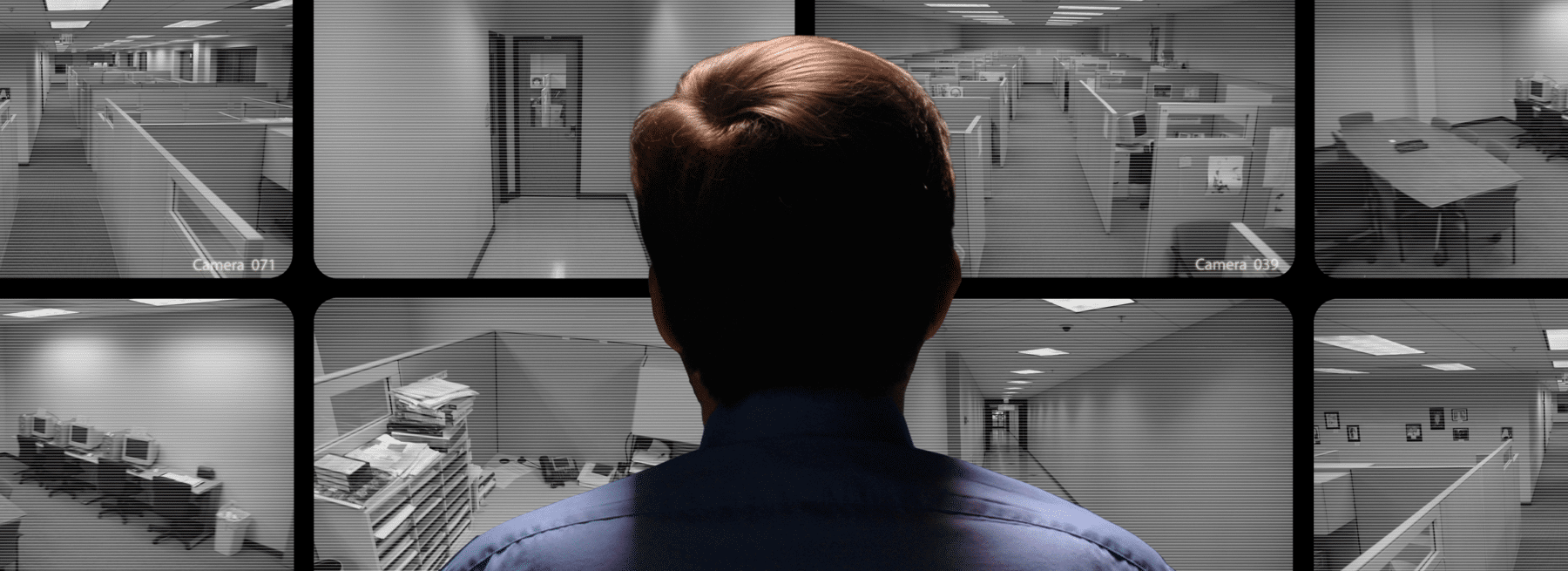A basic video surveillance system simply captures what the security cameras see. Without any intelligence — artificial or human— these surveillance systems aren’t useful in deterring crime and damage. They only become useful when the company learns about a problem. Then, they can go back and review the recordings to determine what happened. However, this is after the crime or damage has already taken place.
A more powerful way that makes it possible to catch things as they happen is by combining video surveillance technology with human intelligence. There’s one small challenge. Imagine monitoring hours and hours and hours of video. It becomes a tedious task for anyone.
This is where video analytics can do the heavy lifting. Security companies can enter many scenarios for video analytics to monitor while excluding others. For example, video analytics can be programmed to ignore such objects as leaves falling from trees and animals moving across the scene and only pay attention to things the monitoring operator needs to know to make a quick decision.
The system may spot unusual human actions. But it can’t tell if it’s innocent or nefarious behavior. Therefore, the system alerts the trained monitoring operator of the potentially suspicious scenario. Human intelligence can quickly discern what’s happening and act as needed. In short, the pairing of human intelligence and video analytics level up security.
What Happens When There’s No Human Intelligence?
What would happen if there was no human intelligence in the video surveillance equation? What if video analytics worked by itself? If it had called 911 about potentially suspicious human behavior and it turned out to be a false alarm, then it would cause multiple problems.
Let’s say the 911 operator sends a police vehicle to the site and nothing is wrong. Then, the city has wasted police resources that would be better spent going to a real emergency. Another problem is that the company could end up paying for the false alarm. Different municipalities have different penalties and fees involved with false alarms.
Video analytics could do this repeatedly. Those false alarms will add up. Too many false alarms could cause the 911 operator to no longer trust the company’s reports. Then, when a real emergency happens, the company may not get the support it needs.
What’s interesting is that video analytics should be unbiased because it doesn’t come with unconscious bias. Despite this, it doesn’t do facial recognition well. It’s long known that AI doesn’t do a good job of reading darker faces.
The High Price of False Alarms
Even if the artificial intelligence’s programming had the ability to send low-confidence anomalies to humans and take care of high-confidence irregularities on its own, do you really want to trust technology to do the right thing? Is the risk of a false alarm worth it?
False alarms are expensive and a drain on police resources. In a GovThink article, Assistant Police Chief Gil Slouchick of the Columbus Police Department writes they receive about 22,000 false alarms every year, which equates to approximately 60 per day.
Slouchick states the average false alarm call takes about 30 minutes to address. Some take longer. That’s 11,000 hours of wasted resources in this one city. The fire department in Columbus deals with seven false alarms every day.
The problem goes beyond sending first responders to a false alarm situation. They travel at high speeds, and they have their sirens on. They’re putting the public at risk because it could lead to a crash. These vehicles burn fuel each time they go out and every wasted trip adds to wear and tear.
For the most accurate response to dodgy situations, pair video analytics with human intelligence. The analytics part of the equation can scan for many scenarios and alert the human intelligence aspect of the equation. The trained monitoring operator quickly responds by checking the video and acting as needed. It can also provide feedback to video analytics to help it get more efficient.
The Human Intelligence Difference
Video surveillance maximizes 24/7 security when it consists of video analytics and human intelligence. It turns into a proactive security solution. As mentioned before, video analytics analyzes video from hundreds or thousands of security cameras for any one of many, many situations. The technology’s ability to do the monotonous task of observing many scenes allows monitoring operators to focus on reviewing the analytics’ findings and providing an accurate response.
Here’s an example of how this works. Video analytics searches for the presence of people in a multifamily parking garage. It detects a person walking around. Has this person just parked and is making their way inside? Or are they walking diagonally, weaving in between cars, perhaps looking for an unlocked vehicle? Human intelligence can help distinguish the difference.
If the person is indeed up to no good, then the human operator can issue an audio warning on an on-site speaker without actually being on the property. The intruder may turn around and leave the property.
In this case, the problem is solved without ever involving first responders. Take human intelligence out of the equation and technology would have contacted 911. Adding human intelligence saved the police from responding as the monitoring operator was able to get the suspect to leave.
It’s good to have a built-in failsafe with human intelligence to confirm what is actually happening on the property.
Video Verification with Human Intelligence Can Speed Emergency Response Times
Video surveillance companies like Stealth Monitoring have relationships with police departments across the United States and Canada. The advantage of these relationships is that the first responders typically give Stealth calls a higher priority. Why? They know Stealth has human operators who verify something is happening before making the call.
“Video verification of crimes is critical, for another important reason: traditional alarms typically receive a ‘Priority 3’ response from law-enforcement agencies; that is, a low priority response (which could mean no response at all),” says Jorge Perdomo in Security Today. “Conversely, an alarm accompanied by video verification will receive a ‘Priority 1’ response, meaning that officers will respond much more quickly.”
Using Video Analytics with Human Intelligence
You don’t want to rely on human intelligence alone either. As previously stated, scanning many monitors is a mind-numbing task. A report from the U.S. Department of Justice confirms there’s a need for high-quality video intelligence. This report explains human monitoring needs support. In doing experiments for the U.S. Department of Energy, Sandia National Laboratories studied the effectiveness of someone monitoring the cameras for specific events for several hours.
“After only 20 minutes of watching and evaluating monitor screens, the attention of most individuals has degenerated to well below acceptable levels,” write the report’s authors. It’s more effective for video analytics to notify the monitoring operator. Thus, the best video surveillance system needs both artificial and human intelligence.
Not only do you want to look for a security solution that combines video and human intelligence but also security cameras with a high enough resolution to make out important identifying information. There are still a lot of cameras on the market that don’t have this capability.
Businesses looking to use video surveillance to help avert crime and damage need to work with a video surveillance company that specializes in their industry. It’s also important to find one that can effectively program the analytics to only pay attention to real criminal events and can cut through the noise of trees swaying in the wind or an animal moving through tall grass.
The use of video intelligence in remote video surveillance enhances the monitoring process. When you combine video analytics and human intelligence, you have the best of both worlds. This partnership saves hours of time when searching feeds and greatly increases the chances of catching a problem.
Benefits of Video Surveillance with Video Analytics and Human Intelligence
Video surveillance with human intelligence is more affordable than you think. Remote video surveillance delivers one of the fastest ROI on security technology that helps prevent crime and costs up to 60% less than the price of security guards.
Security camera technology is constantly evolving. It’s getting more efficient, more effective, and more affordable. Innovative security technologies with human intelligence add multiple layers of security. Companies investing in surveillance cameras with remote monitoring can maximize their profits as they also experience increases in productivity and enhance the customer experience.
There’s no security system that can do everything for your security. That’s why it’s imperative to add layers to your security. The more layers in a security system, the harder it becomes for intruders to break in. Most crooks don’t want to work hard to achieve their goals.
Remote video surveillance is flexible to allow you to scale up or down as needed while improving business operations. Check out this case study to discover how video surveillance helped lower crime and save money.
A Stealth Monitoring security consultant can review your requirements and property to design an effective live video monitoring solution that fits your requirements and budget. To learn more about surveillance cameras, pick up your free guide “Live Video Monitoring: More Than Just Catching Criminals” or contact us.

